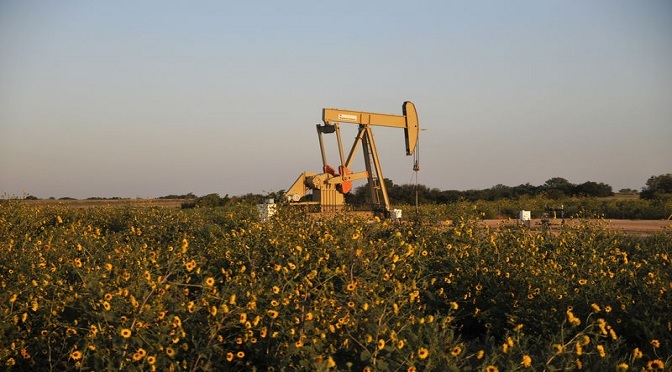-
Authoradmin
-
Comments0 Comments
-
Category
By Aaron Sheldrick
TOKYO (Reuters) – Oil prices climbed around 3% on Thursday amid escalating tensions in the Middle East as a U.S. official said one of the country’s military drones was shot down by an Iranian missile.
The drone was downed in international airspace over the Strait of Hormuz by an Iranian surface-to-air missile, a U.S. official said on Thursday, speaking on condition of anonymity.
Earlier, reports out of Iran said the nation’s Revolutionary Guards had downed a U.S. “spy” drone in the southern province of Hormozgan.
Tensions have been rising in the Middle East after last week’s attacks on two tankers near the Strait of Hormuz, a chokepoint for oil supplies.
Fears of a confrontation between Iran and the United States have mounted, with Washington blaming Tehran for the tanker attacks and Tehran denying any role.
Oil prices had risen earlier in the day supported by signs of improving demand in the United States, an agreement between OPEC and other producers on a date for a meeting to discuss output cuts and signs that the U.S. and China were resuming talks to resolve a trade war that is threatening global growth.
“The geopolitical side is the wild card and can’t be predicted, not just the Iran concerns but also the trade meeting between” President Donald Trump and Chinese President Xi Jinping, said Phin Zeibell, senior economist at National Australia Bank.
Brent crude futures were up $1.93, or 3.1%, at $63.75 a barrel around 0650 GMT, after rising as high as $63.88.
U.S. West Texas Intermediate (WTI) crude futures were up $1.73, or 3.2%, at $55.49 a barrel.
After swelling to near two-year highs, U.S. crude stocks fell by 3.1 million barrels last week, compared with analyst expectations for a draw of 1.1 million barrels, the Energy Information Administration (EIA) said on Wednesday. [EIA/S]
Refined products also posted surprise drawdowns as gasoline demand ticked higher on a weekly basis and surged 6.5% from a year earlier.
(Graphic: U.S. crude inventories, weekly changes since 2017 – https://tmsnrt.rs/2XlX17b)
Members of the Organization of the Petroleum Exporting Countries (OPEC) agreed to meet on July 1, followed by a meeting with non-OPEC allies on July 2, after weeks of wrangling over dates.
OPEC and its allies will discuss whether to extend a deal on cutting 1.2 million barrels per day of production that runs out this month.
Momentum for an agreement appeared to be building as the United Arab Emirates’ energy minister told Al-Bayan newspaper that an extension is “logical and reasonable”.
Expectations the U.S. Federal Reserve could cut interest rates at its next meeting were also supporting oil prices.
“Fresh stimulus from the largest economies will greatly improve the demand-side argument. A positive outcome with the U.S.-China would be icing on the cake,” said Edward Moya, senior market analyst at brokers OANDA.
Recent Comments
- Starlight Herot on Euro Higher on German Data, Sterling Edges Lower
- Frost Dragont on Euro Higher on German Data, Sterling Edges Lower
- Gwinnettt on Euro Higher on German Data, Sterling Edges Lower
- Vanessat on Euro Higher on German Data, Sterling Edges Lower
- Christinet on Euro Higher on German Data, Sterling Edges Lower
Archives
- April 2025
- March 2025
- February 2025
- January 2025
- December 2024
- November 2024
- October 2024
- February 2024
- July 2023
- July 2021
- May 2021
- March 2021
- February 2021
- September 2020
- May 2020
- February 2020
- December 2019
- November 2019
- October 2019
- September 2019
- August 2019
- July 2019
- June 2019
- May 2019
- April 2019
- March 2019
- February 2019
- January 2019
- December 2018
- November 2018
- October 2018
- September 2018
- August 2018
- July 2018
- June 2018
- May 2018
- April 2018
- March 2018
- February 2018
- January 2018
- December 2017
- November 2017





